Learn About The ‘S’ Personality Type
Adam Stamm
Managing Partner: Online DISC Profile
Learn About The ‘S’ Personality Type
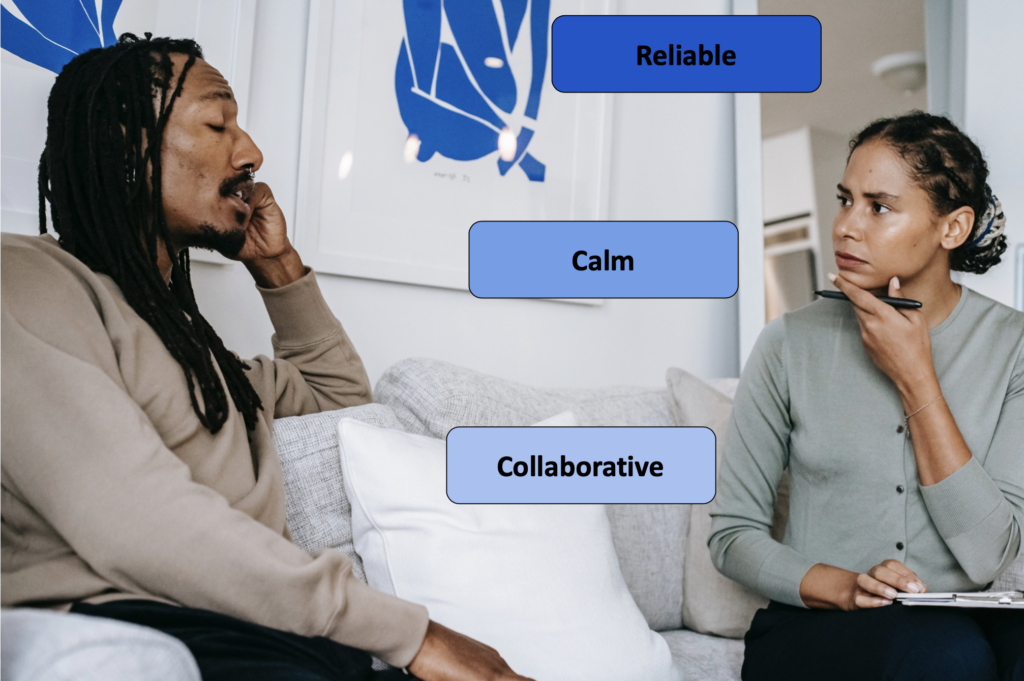
The S Personality Type is a unique style based on the DISC Model.
DISC is an acronym, and the letter “S” is defined by the word Steadiness. Those with the S-personality type will identify themselves as:
- Calm
- Collaborative
- Reliable
Within the DISC model, all personality types bring value to all interpersonal relationships and within the workplace. Each personality type has different strengths and areas for growth.
In this article, I will define this particular personality type. As someone with this specific personality style, I will include my own insights and experiences alongside what the research shows.
In previous blog posts, I wrote about the D Personality Types, I Personality Types, and C Personality Types.
We’re rounding out the series by discussing the S personality type. If you’re new to DISC, learn about all 12 DISC personality types here, or consider starting learning more about what DISC means first.
The 'S'-type Personality Explained
People with the S personality type are team players who value follow-through. They approach challenges with a “slow and steady wins the race” approach and try to avoid unnecessary risk or change.
Pure S-Style individuals are pretty rare. Many people have an S-Style in combination with another DISC Personality Type.
A few years ago, I was speaking with someone who works in the financial industry at a conference.
They explained to me that their organization recently began implementing DISC and that they felt they should no longer promote anyone with the S-Personality type because they didn’t score high on dominance (a trait they valued at their organization). I strongly encouraged them to reconsider and explained the value that this personality can bring to any leadership team.
Don’t let this personality style fool you. While individuals with this personality may not take as many risks as those with the other personality styles, they can succeed in any domain they pursue.
Here is a short list of accomplished S-Style individuals:
- Mother Teresa
- Michael J. Fox
- Princess Diana
- Michael Jackson
- Nelson Mandela
- Jimmy Carter
Famous S-Personality Individuals
Many well-known people have this particular personality style, and there is no reason to think that they can’t be successful because someone has the S-Personality type. For example, Academy Award-winning actress Kate Winslet and Delta Airlines CEO Ed Bastian have the S-personality style. Below are a few more examples of some famous S-Style individuals.

Michelle Obama
A defining characteristic of the S-Personality Style is a focus on others.
Michelle Obama was an accomplished lawyer when she met Barack Obama. After they married and Barack ran for office, Michelle slowly dropped her work to support Barack’s aspirations for higher office and to support their growing family.

Keanu Reeves
One of the key differences between the I-Style and the S-Style is how energy is displayed. Both styles seek interaction with others, but the S-Style is more calming and patient (hence the label of Steadiness)
Keanu Reeves is known for riding the subway where he exhibits a calming presence without a lot of fanfare.

Dalai Lama
S-Personality Types go above and beyond to support others.
The Dalai Lama is quoted as saying, “Our prime purpose in this life is to help others. And if you can’t help them, at least don’t hurt them,”.
Want to learn the personalities of other famous individuals? Please read our blog post, which identifies the DISC styles of various celebrities and well-known individuals.
What is a 'High S DISC Profile'?
When discussing personality styles within the DISC model, the term ‘high S style’ means someone is strongly aligned with the S-personality Type.
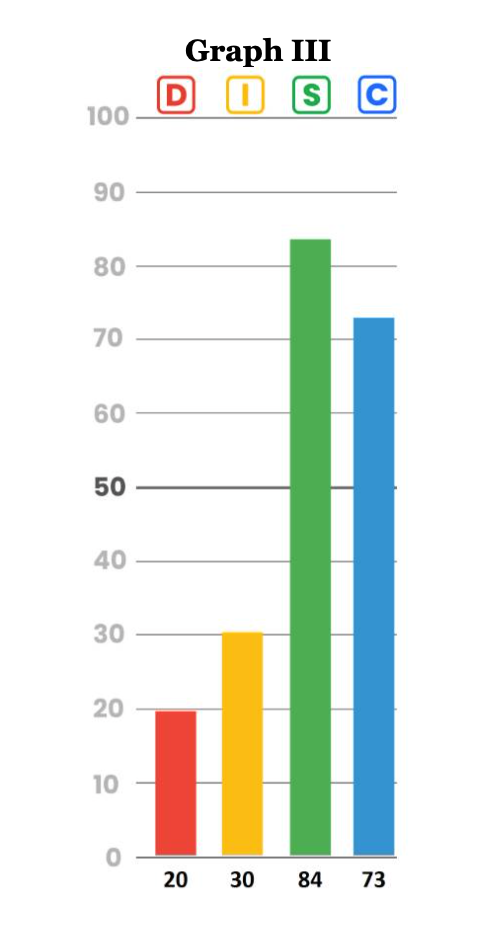
The term comes from the description of a person’s graph height on their DISC Profile.
Before digital assessments, DISC profiles were paper-and-pen instruments. Participants would need to draw their DISC graphs and develop commentary based on the graph descriptions, since a particular style was ‘higher’ than the others.
When someone has a high graph in one of the styles, they can refer to themselves as having a ‘high’ profile in that quadrant.
Other S-Personality Types Terms
There are a few other phrases that could describe the S-Personality Type.
- DISC Colors – Green
The DISC Colors are sometimes referenced instead of using the letters. If someone says they are a ‘Green Profile,’ they have an S-Personality Type!
- DISC Birds – Dove
The DISC Birds profile uses images of birds to showcase the DISC styles. If you have a Dove Style, you are also a S-Personality Type.
Want to learn how to leverage this tool? Read our DISC Starters guide! DISC can be used on its own, or it can be used within the context of emotional intelligence.
What drives the S personality type?
The S-Personality Type is driven by the following psychological needs:
- Harmony
- Stablity
- Security
When someone with an S personality type is in their comfort zone, they can make steady progress toward their goals. Because of this, people with this personality type are excellent at follow-through.
They are easy to get along with. It may seem like they are wishy-washy about what they believe because they may not challenge someone’s viewpoint that goes against their own.
Because the S personality type values security, they tend to be risk-averse and prefer to seek consistency in their environment. They dislike pushy behavior that would pressure them into deciding or taking action faster than they feel comfortable.
S Personality Strengths
The S personality type is often the team member you can count on the most to see a task through to the end and be a true team player.
Calm & Patient
This personality type is the peacemaker. They don’t often seek aggressive action, and they are likely to take a back seat in decisions. However, when a conflict arises, they will be on either side of the argument giving an ear to both member’s sides.
Reliable
The S personality type rarely strays away from their routine and consistent environment, making them extremely reliable. You always know where they’ll be, and what they are capable of contributing to the team.
Collaborative
People with this personality type want to keep things moving forward and will do anything they can for the good of the team. While they don’t tend to be innovator in group situations, they will make sure that everyone is working together to get things done.
S Personality Areas for growth
No personality trait is inherently good or bad, but it’s always useful to have an understanding of which personality traits invite growth. These are some of the growth areas for the S personality type.
Lack of assertiveness
The S personality type prefers to keep the peace and make sure everyone is happy, but this can come at the expense of their own needs, or happiness. People with this personality type often have difficulty speaking up, or prefer to go along with a plan they disagree with, for the sake of peace. This can open them up to be taken advantage of by those that are more assertive and have no difficulty making their opinions known.
Risk averse
The steady nature of the S personality type ensures that people with this type are always inching closer to their goals, but their aversion to risk can keep them from taking leaps of growth. People with this personality type risk staying “stuck” in their own comfort zone and missing out on opportunities for change.
Understand Those with the 'S' Personality Type
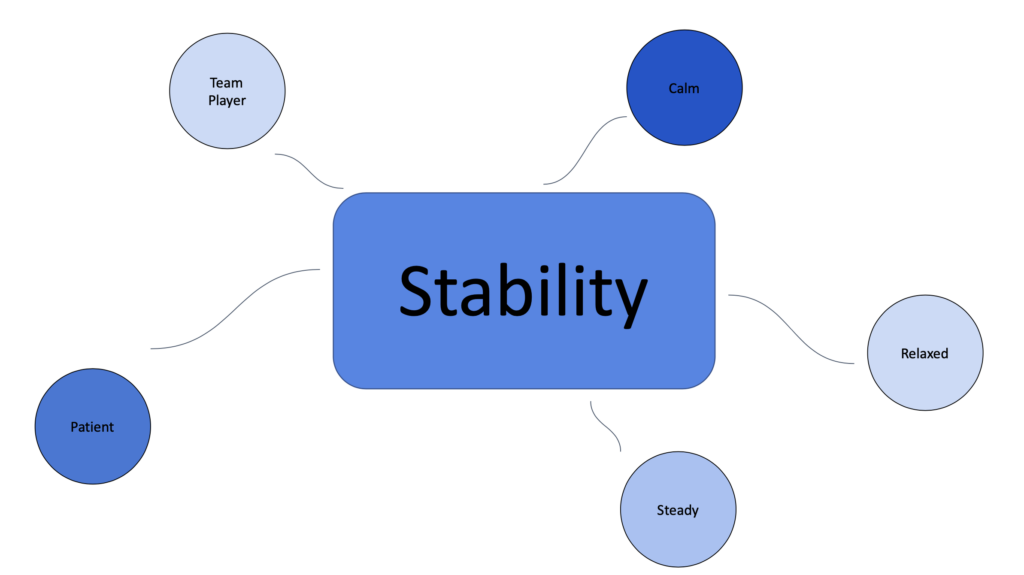
This section will review the motivations and priorities, communication style, stressors, and other considerations you should keep in mind when working or interacting with those with the S-Style.
Motivations and Priorities
Those with the S-Style are motivated to behave in ways they feel will help them find stability in a predictably unstable world.
These behaviors could show up in situations where someone decides not to leave a bad job, find a better area to live, or advocate for a project they know would be successful. From the outside, these decisions might look like someone is afraid when, from their perspective, they are actually protecting the predictable stability they know today rather than an unpredictable future if they make a decision that could cause disruption.
The S-Style’s need for stability creates a double edge sword. On one side, they find and create environments which are predictable. On the other hand, they might rely too heavily on stability where it could become detrimental towards their work or personal life.
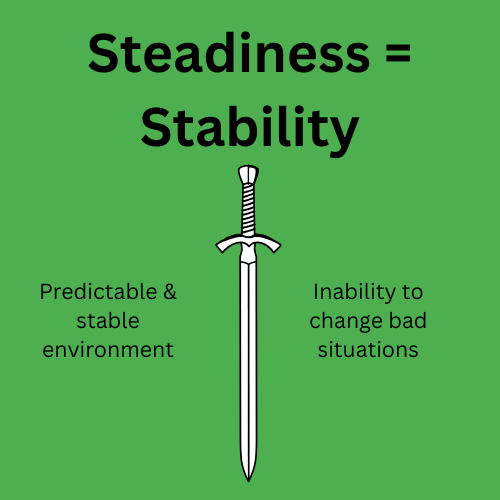
It’s important to state that all personality types have this characteristic where a strength can quickly become a weakness. It’s a reason why identifying your DISC Personality Type is essential to understanding how you make decisions.
Communication Style
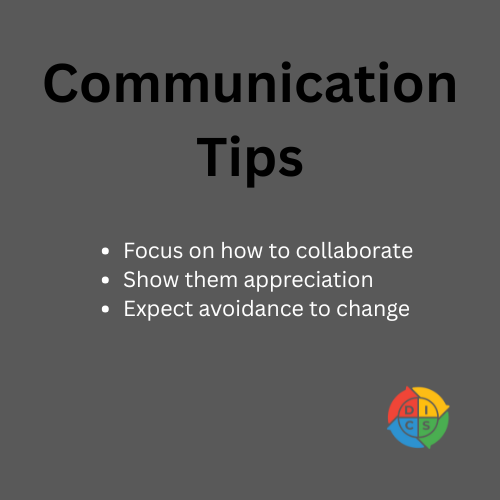
When communicating with someone with the S personality type, it’s important to give them plenty of opportunities for them to speak their own mind. People with this personality type tend only to speak up once they’ve thought about exactly what they want to say. If you don’t give them the time to formulate their thoughts, you may miss out on their valuable insights.
Similarly, it’s important not to tone down any aggression when communicating with this personality type, as they will not meet any level of aggression or assertiveness and will instead shut down.
When presenting ideas to someone with an S personality type, focus on the parts of your idea that minimize risk, and focus on the parts that maintain stability. Offer someone with this personality type plenty of opportunities for collaboration, and trust that they will organize their time efficiently.
Stressors and Concerns
Beyond instability, those with the S-Personality Type will feel stress when there is a lack of consideration towards others or when harmony could be disrupted.
The S-Style focuses on people’s needs over tasks, and this preference can often feel threatened in the modern workplace.
When decisions are made without considering the effects on employees or other stakeholders, this personality style will feel stressed. For example, many leadership teams make decisions about employees or external partners that make sense on paper, but could put the relationship at risk.
Alternatively, an S-Style person might delay giving bad news because they believe it will upset the relationship with whomever they need to tell it to. It’s essential for individuals with this style not to project their fears and stressors onto others.
Considerations when working with 'S' Style
Hopefully by now, you can identify someone in your life who has the Steadiness personality. If you work with someone with this style, here is a short list of ideas on how to work more effectively with them:
- When discussing potential changes, give them time to process the changes and outline the effects you know the decision will have on others.
- Allow them to find ways to bring others into the conversation or projects. Those with this style are natural team builders and group connectors – this is a powerful ability that will help on large and complex projects.
- Make sure those with this style are realistic about challenges. Have a conversation with them about how to accept and move on from challenges without making a challenge a normal part of a process.
Find your DISC Personality Type
Are you steady, collaborative, and prefer security over risk? Then you may have the S personality type. Take the DISC free personality assessment to determine if you’re an S or a different personality type.
